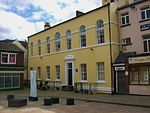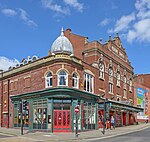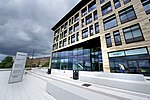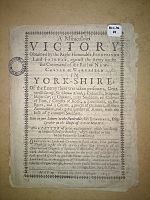Diocese of Wakefield
1888 establishments in England2014 disestablishments in EnglandAnglican Diocese of LeedsChristian organizations established in 1888Christianity in South Yorkshire ... and 5 more
Christianity in West YorkshireChristianity in YorkshireDiocese of WakefieldDioceses of the Church of EnglandWakefield

The Diocese of Wakefield is a former Church of England diocese based in Wakefield in West Yorkshire, covering Wakefield, Barnsley, Kirklees and Calderdale. The cathedral was Wakefield Cathedral and the bishop was the diocesan Bishop of Wakefield. The Diocese of Wakefield was created out of the Diocese of Ripon in 1888 in response to the rapid expansion in population due to the Industrial Revolution. Immediately prior to its dissolution it extended north to south from the suburbs of Leeds to Barnsley and east to west from Kellington to Todmorden. The diocese was dissolved on 20 April 2014 by the creation of the new Diocese of Leeds.
Excerpt from the Wikipedia article Diocese of Wakefield (License: CC BY-SA 3.0, Authors, Images).Diocese of Wakefield
George Street, Wakefield Thornes
Geographical coordinates (GPS) Address Nearby Places Show on map
Geographical coordinates (GPS)
| Latitude | Longitude |
|---|---|
| N 53.68 ° | E -1.5 ° |
Address
George Street
WF1 1DL Wakefield, Thornes
England, United Kingdom
Open on Google Maps











